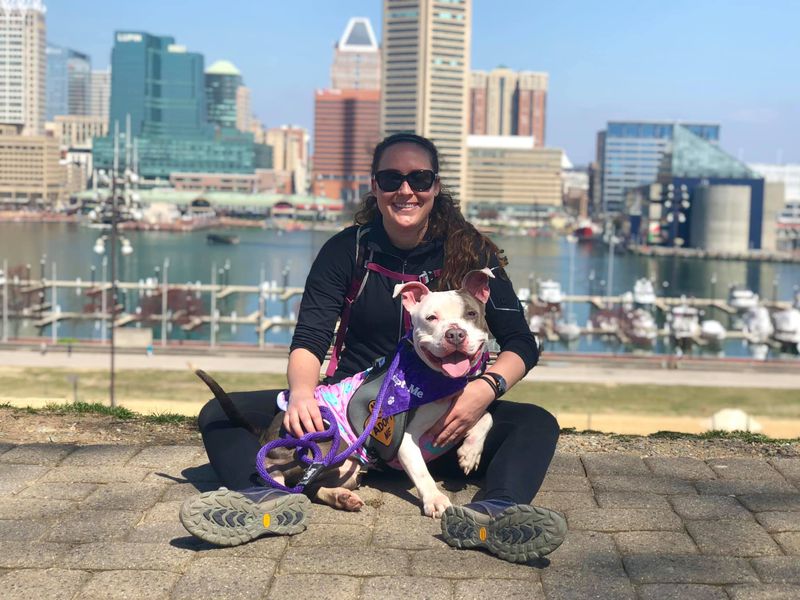
Foster Spotlight: Kathryn Lally
Having grown up with dogs and having a mom who raised a service dog for a veteran, it was only natural that Kathryn Lally would gravitate to BARCS to sign-up to be a volunteer dog walker.
She started as a volunteer at BARCS in 2014 walking dogs, but it wasn’t long before she realized she wanted to help the shelter dogs that were most in need of special attention.
“I began training with staff,” Kathryn says. “I learned a lot about reading dog body language and how to safely interact with and handle fearful or overstimulated dogs. I also assisted with play group socializations and began taking dogs out of the shelter for extended outings around the city or at local parks to give them a break from kennel life.”
Kathryn became very good at working with what BARCS calls “behavior dogs.” These dogs might be very afraid and overwhelmed by the loud and bustling shelter kennel environment or perhaps could benefit from some additional training to be best set up for success in their future adoptive home. So it seemed, for her, that the next logical step was to take these dogs home for a few days of fact-finding fostering and to see how their behavior might improve in a quieter home environment.
“Sometimes these dogs just need to decompress,” Kathryn says, “and a few days out of the kennel and in a home can make a world of difference.” Other dogs, after Kathryn evaluates them in her home, may benefit from a longer term foster home to continue working on their training plans. Fostering dogs for a few days helps Kathryn equip the BARCS staff with useful information about the dogs’ individual needs and find the best placement to set each dog up for success in its future foster or forever home.
On average, Kathryn fosters two dogs a month, and she calls it “a win-win.” At this point in her life, she is not ready to adopt a dog of her own, but, she says, hosting these temporary foster dogs allows her to “get my dog fix while at the same time helping a dog get closer to a forever home.”
And there is no question that these fact-finding missions had yielded success.
“Just recently, there was a dog that came into the shelter absolutely terrified. He was so afraid that he did not want to leave his kennel,” Kathryn recalls. “He would not walk on a leash; he was completely frozen in place.” She took him home so he could relax and she says he soon discovered “the world is not such a scary place.” His behavior improved drastically while in her home, and he was soon ready for a long-term foster home and is one step closer to adoption.
And while Kathryn has nothing but praise for the staff and volunteers at BARCS and how wonderfully they care for every animal that comes through their shelter doors, “at the end of the day a kennel is not the same as a home,” she says. She notes that studies have shown that even a few days in a home and out of a shelter can reduce the stress hormone cortisol before, during, and after a sleepover and do wonders for a dog.
Fact-finding foster sleepovers also are helpful in attracting adoption interest for the long-term dogs that have been overlooked for one reason or another. She knows the value of marketing and loves to dress the dogs in cute outfits and take quality photos and videos of the dogs to upload to BARCS’ website and social media. It helps potential adopters get a better sense of the dog’s true personality and better imagine how the dog could fit into their own home. “Plus, who doesn’t love a pup in PJs!” she says.
Kathryn has fostered close to 80 dogs, and while someday she hopes to do more long-term fostering, she is grateful that she can help dogs in what she calls, “my own small way. I love being a shelter dog’s bridge to a regular foster home or just becoming a more confident and happier dog. It’s a niche I love, and I hope more of our community will consider getting involved with fostering dogs and helping BARCS save even more lives.”


